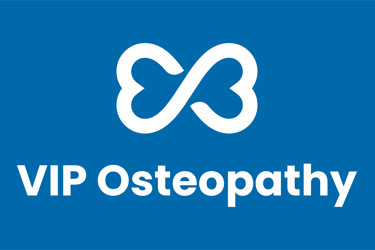Aching joints?
Let's talk about Osteoarthritis
VIP Osteopathy - Keilor
3 min read


Aching knees when you walk the dog? Stiff hips after sitting too long? Hands not quite cooperating when opening jars? You might be dealing with osteoarthritis — and you’re definitely not alone. It’s one of the most common types of pain that we see in clinic.
The good news? You’ve got more control of your pain than you think.
What Is Osteoarthritis, Really?
Osteoarthritis (OA) is the most common form of arthritis. It’s a condition where the smooth cartilage that cushions your bones and joints, gradually breaks down over time. When that support wears thin, the bones in the joint can start to rub together, causing pain, swelling, inflammation, and stiffness.
But there’s more to it than just "wear and tear". Your joints are living, moving parts of your body — and they respond to everything from the way you move, to the muscles that support them, to how much rest or stress you’re under. That’s why someone with a previous injury, inflammation or weak muscle support around a joint, might notice symptoms sooner.
It often shows up in the knees, hips, hands, and spine, and while it becomes more common with age, younger people can develop it too, especially if they’ve had joint injuries, repetitive strain, or certain lifestyle factors; such as being active, or have jobs that involve repetitive movement.
The silver lining? Having osteoarthritis doesn’t always have to mean constant pain or giving up the things that you love. With the right support and strategies, many people stay active, strong, and confident in their bodies for years.
How Osteopathy may help
When you come in with joint pain or an osteoarthritis flare-up, osteopathic treatment starts with the bigger picture, because it’s rarely just about one joint. We would assess how your whole body moves and how your muscles, joints, and posture all work together. Sometimes, pain in the knee may be coming from how the hip or ankle is or isn't moving. Other times, the way you move to protect a sore joint can create new problems somewhere else.
Using hands-on osteopathic techniques like joint mobilisation, soft tissue release, and gentle movement therapy, we aim to help:
Ease pain and stiffness
Restore comfortable, efficient movement
Rebuild confidence in using your body, without fear of causing more damage
But it doesn’t stop there. We work together to tailor a plan that fits your life. That might include:
Strength and mobility exercises to support the joint and reduce future flare-ups
Simple modifications to your activities or setup at home or work
Education about what’s actually happening in your body — because understanding it takes away a lot of the fear
Strategies to pace your movement and rest, so you’re staying active without overdoing it
Our goal is to help you move better, feel better, and get back to the things that matter to you — whether that’s gardening, walking the dog, or just getting through the day without pain running the show.
What You Can Start Doing Now
Keep moving in a way that feels good. Joints love variety and gentle activity. Even short walks, water-based exercise, or light stretching may help reduce stiffness and improve how your joints feel day to day.
Support the muscles around the joint. Strengthening exercises, especially for the hips, thighs, glutes, or shoulders (depending on the joint and individual presentation) may help to absorb impact and reduce pressure on painful or inflamed areas.
Heat may help. A warm shower in the morning or a heat pack during the day or at night before bed can work to relax tense muscles and make it easier to get moving.
Using movement as medicine but listen to your body. There’s a sweet spot between doing too little and overdoing it. A little discomfort can be okay, but sharp, escalating, or lingering pain is worth flagging.
Make small changes to daily habits. Swap low chairs for higher ones, use jar openers or ergonomic tools in the kitchen, or change how you carry bags. Little tweaks can help to reduce everyday strain.
Breathe, rest, and recover. Stress, poor sleep, and fatigue can all increase pain sensitivity. A good night’s rest and moments to pause during the day genuinely help joints cope better.
And if your joint pain keeps getting in the way — let’s work together to understand what’s going on and make a plan that actually fits your life.
Contact us
Address: Consulting out of The Sports Recovery Hub
767 Old Calder Highway, Keilor, VIC, 3036
Telephone: 0476 807 144
Email: hello@viposteopathy.com.au
© 2025. All rights reserved.


